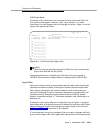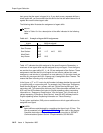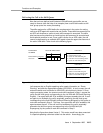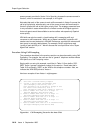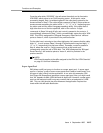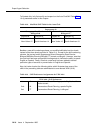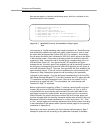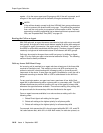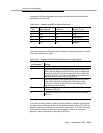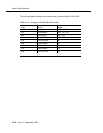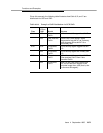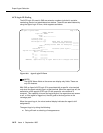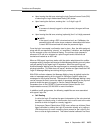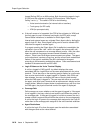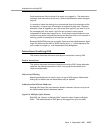
Expert Agent Selection
10-18 Issue 4 September 1995
agents > 0) to the super agent pool (Supergroup-99). If the call is queued, and if
an agent in the super agent pool is available, this agent answers the call.
NOTE:
If the call has already queued to all three VDN skill hunt group preferences,
it will not queue to the specific skill hunt group. This reflects the restriction
that a call can only queue to a maximum of three splits or skills. The best
approach is to test the splits/skills first to determine where to queue the call.
Also, see "Expected Wait Time (EWT)" on page 6-2.
Routing the Call to an Agent
With EAS optioned, an agent becomes associated at login with one or more skill
hunt groups. A single set of work mode buttons applies to all the skills assigned
to a logged-in agent (for example, if the agent selects ‘‘Aux Work,’’ the agent is in
Aux Work for all the skills associated with the agent). Therefore, logged-in agents
need only a single set of work-mode buttons for all relevant skill hunt groups.
Calls may be routed to the agent from a skill hunt group, by dialing an Agent
Login ID, or by dialing an agent voice terminal extension directly. The following
sections discuss these procedures.
Delivery from a Skill Hunt Group
An incoming call is matched to an agent who has at least one of the three skills
required to handle the call. This matching is done via ACD queuing and via
queue-to main skill, check-backup skill, messaging skill,
or
converse-on skill
commands in the vector. If more than one agent is available for a call, the call is
delivered according to whether EAD or UCD is administered for the skill hunt
group.
For any one login session, an agent can have a maximum of four skills. Each
agent skill is administered as either a primary skill or a secondary skill. The ACD
software distributes any call that is waiting for one of the agent’s primary skills
whenever the agent becomes available. If no calls are waiting for a primary skill,
the queued calls for the secondary skills are distributed to the agent.
Once an agent becomes available, he or she receives a waiting call in the
following order:
1. Oldest Direct Agent call waiting for the agent
2. Oldest call waiting at the highest priority for all primary skills
3. Oldest call waiting at the highest priority for all secondary skills
For example, let’s assume that Jill is the only agent with skills 22P, 13P, and 47S.
Let’s also assume that, while Jill is in AUX work mode, five calls are queued, as




